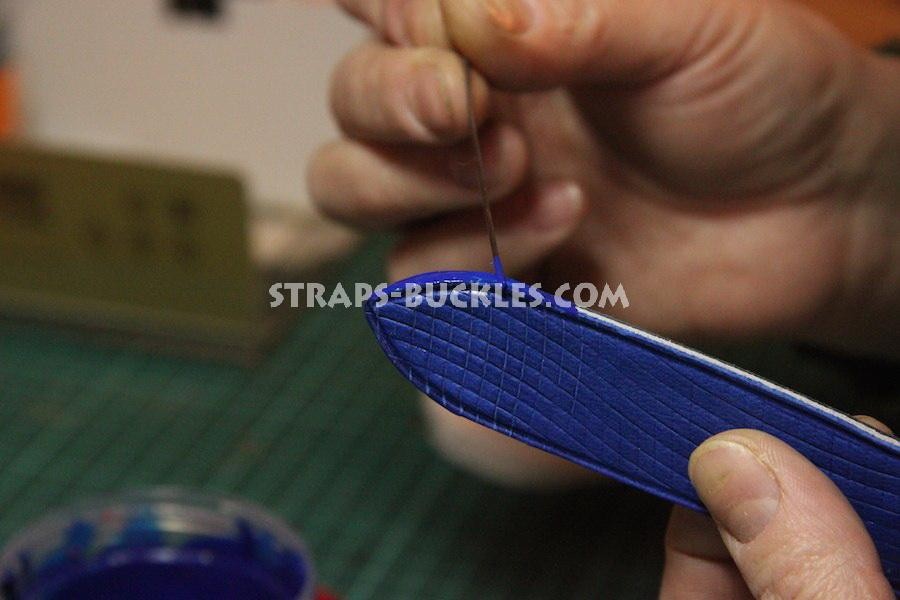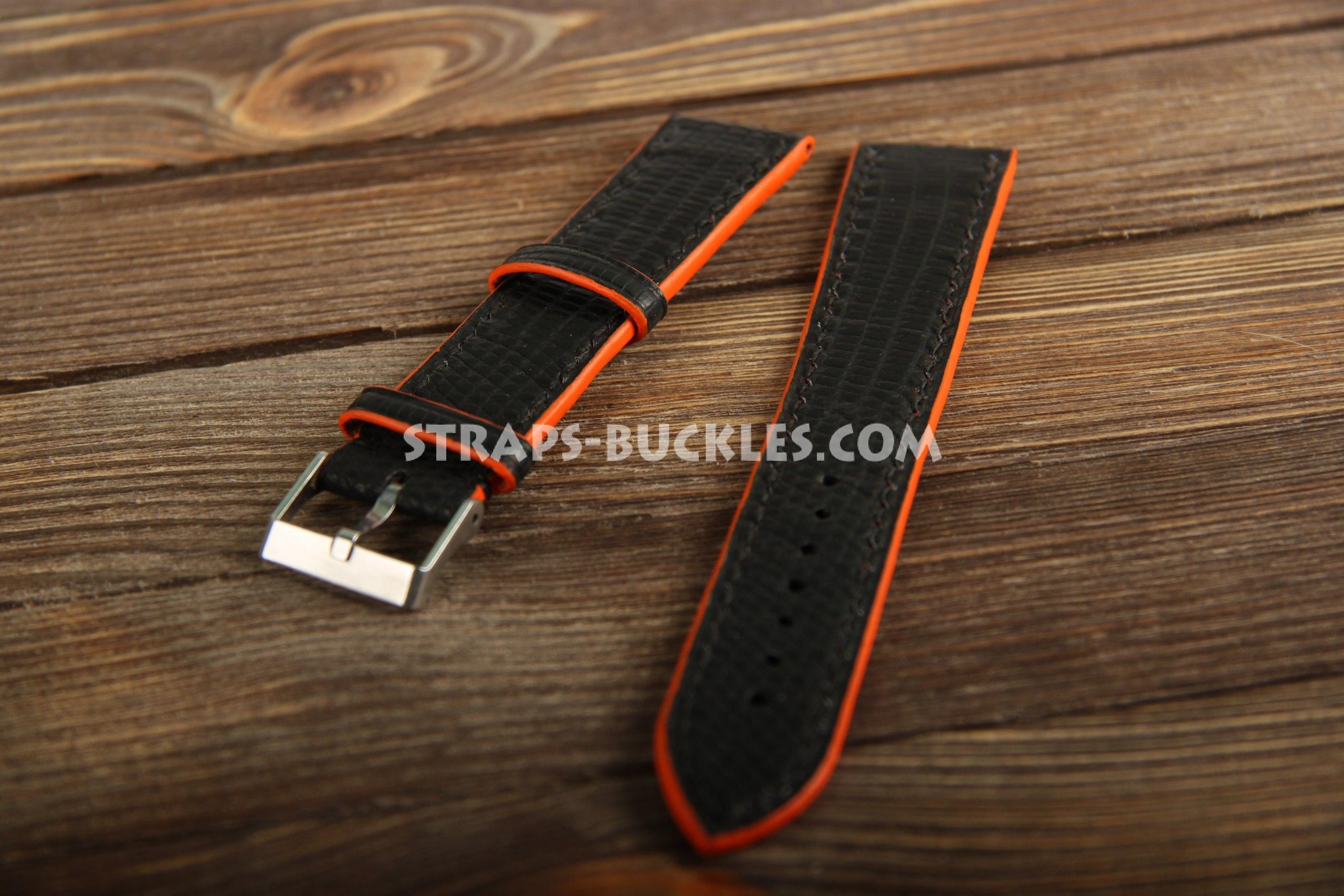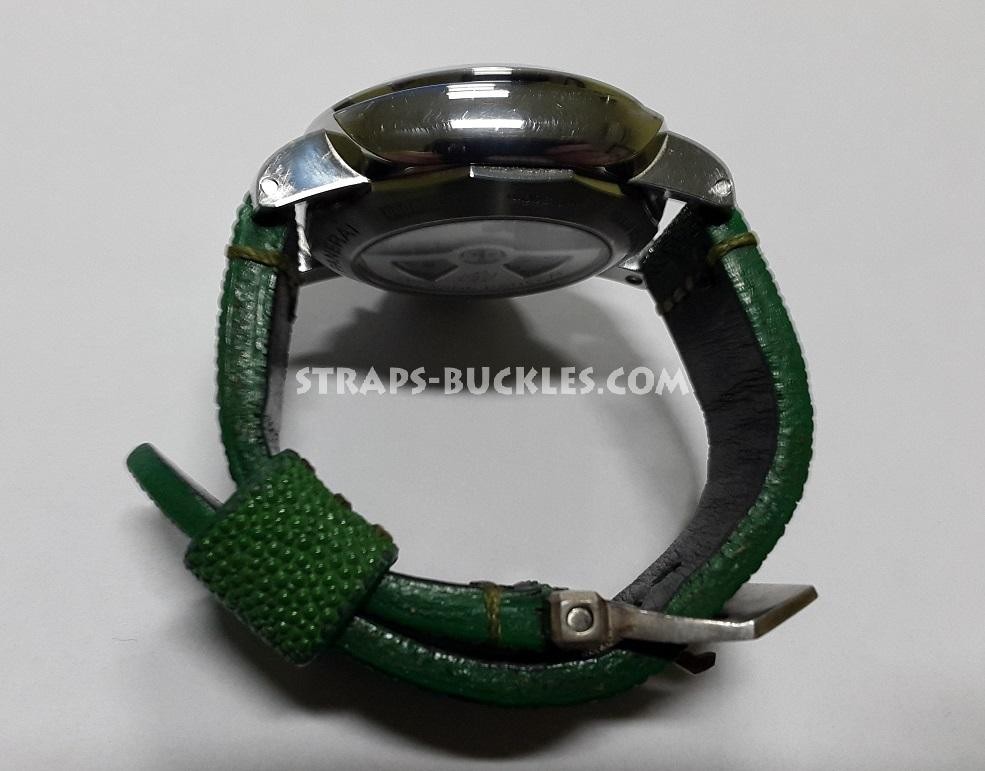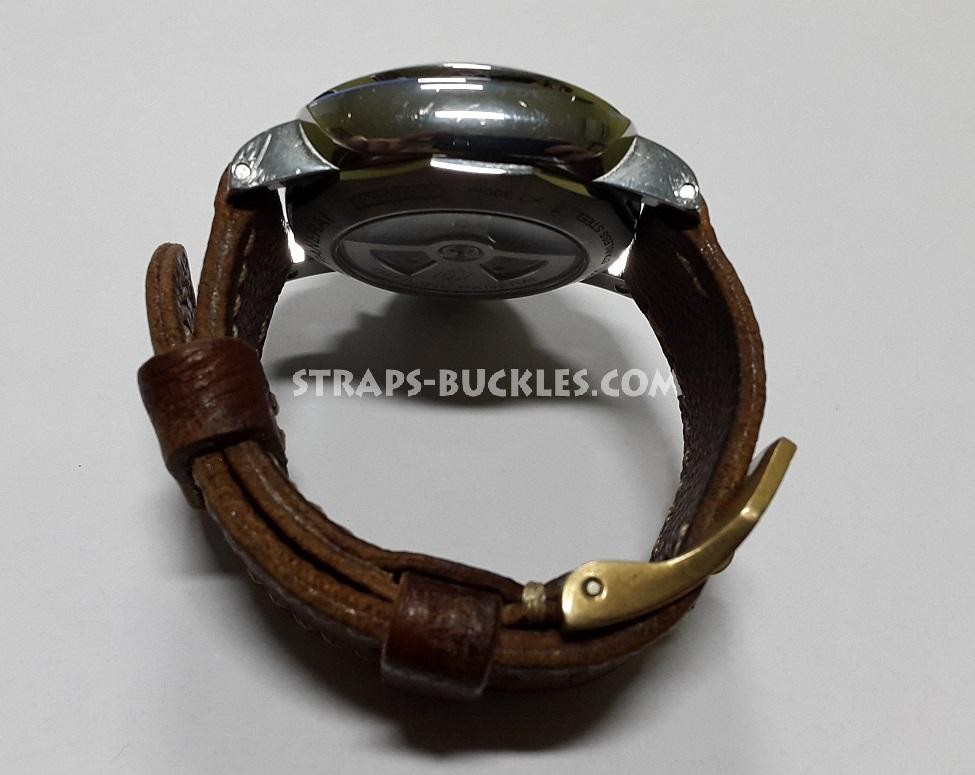Ordering a strap is a simple matter at first glance. If you want to get a standard product). But you can buy this in an ordinary store, why do you need it?
Making a custom-made strap requires maximum satisfaction of the customer's wishes. But not everyone knows these nuances. I learned these subtleties from my own experience as my collection of straps and buckles grew. I am sure that after reading my article, in the eyes of the manufacturer of the straps, you will look like an advanced customer;) Be patient, 15 points and 55 accompanying photos are highlighted, information is not enough. But, believe me, this is the only complete manual in the world! Such a thing and never did. Because the user does not need to spend on this force, and the manufacturer, the less you have requests, the easier it is!)
1. Skin type.
Conditionally, all the skin from which the straps are made can be divided into two types: "calf" and "exotic". The calf is both calves and cows. In general, very common animals, with fairly large in size skins.
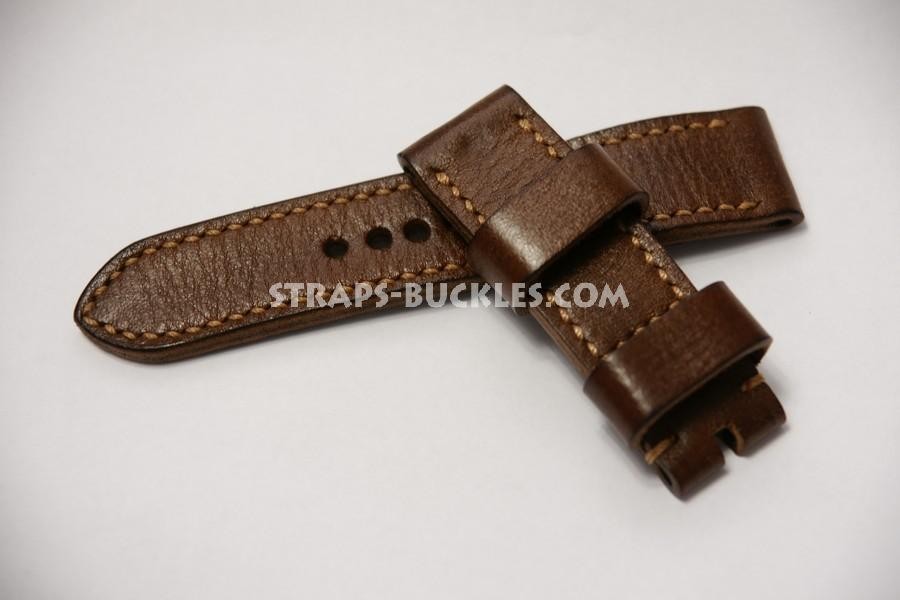
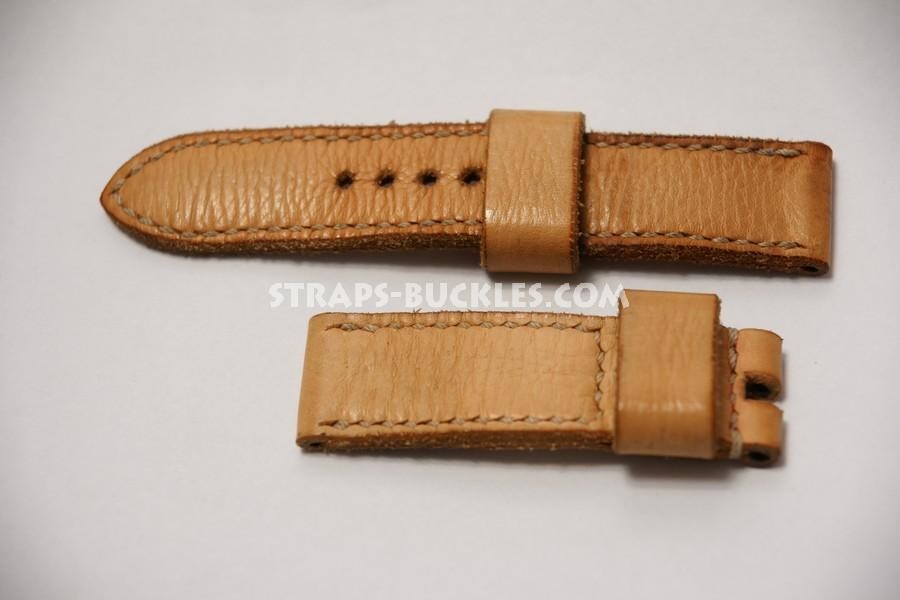
Exotics is the skin of rare species of animals. They can be different in size, small and large, but they unite them one - they are rare. Agree, if the cow can be seen in the suburbs, on the field, then the hippopotamus or crocodile you are unlikely to meet there)
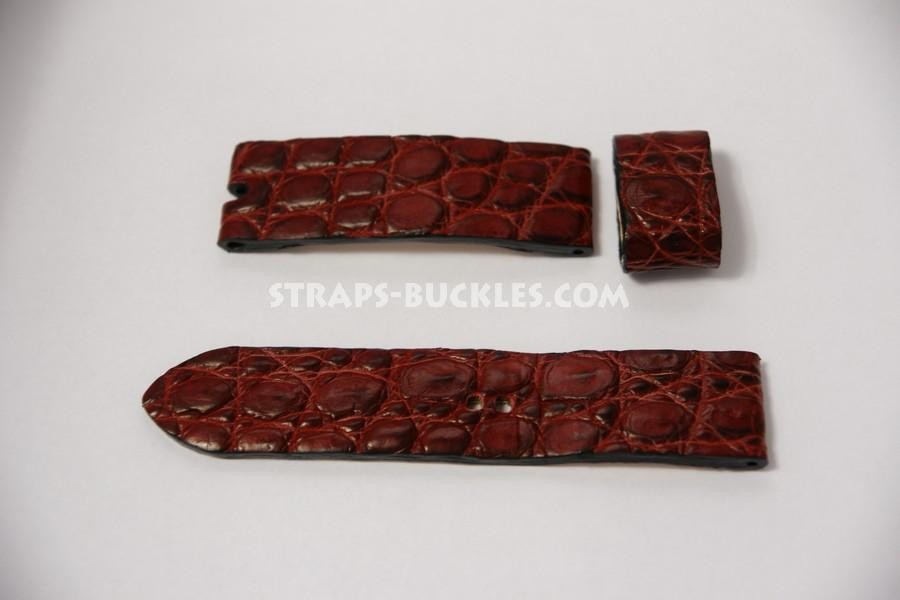

Despite the fact that the "calf" can be made differently - artificially aged, different in color, even embossed "exotic" - "exotic" looks much more interesting and multifaceted. She has a much richer selection of textures laid by nature.
As for the price, the "calf", more often, is much cheaper than the "exotic". The difference between them at times, depending on the type of "exotic".
Although among the products of the "calf" there are specimens that can cost more than "exotics." For example, a strap made of "historical" leather (a 100-year-old weapons bag or leather raised from an ancient sunken merchant ship), a strap from a winning baseball glove, or a piece of leather from the boots of a great football player.
2. Strap type.
The straps can be divided into standard and "not very")
Standard strap can be made from both "calf" and "exotic". He has a restrained cut and moderation in the details. The color can be both bright and calm.
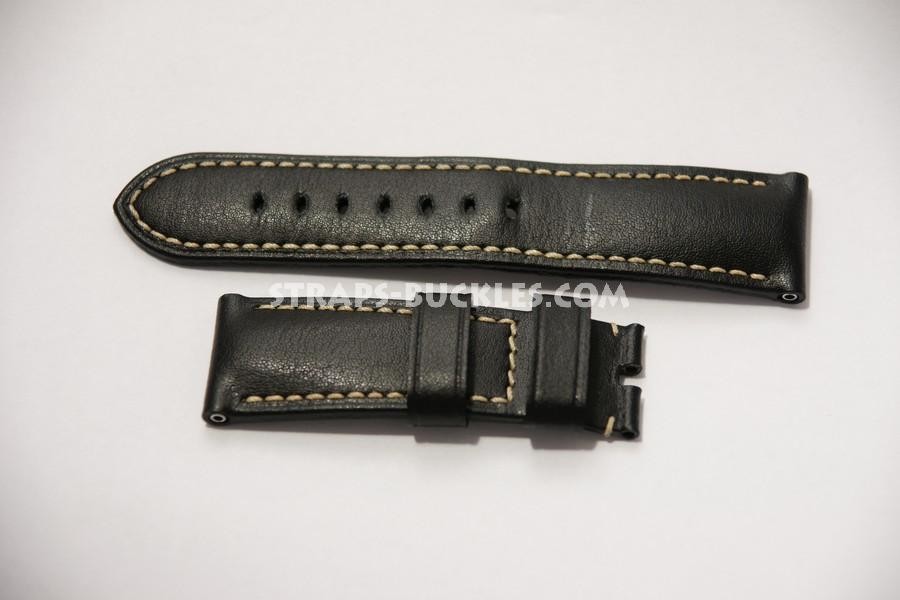
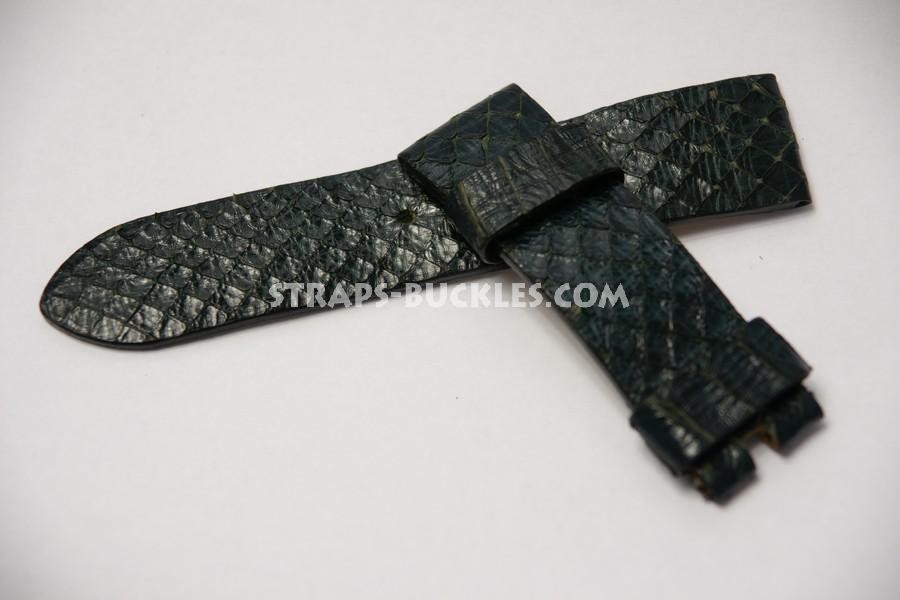
In addition to standard straps, today's buyer has the opportunity to order straps and other types.
Аммо.
Straps from historical or modern calf leather (gun bags, cartridge cases, holsters and sweatshirts). On the historical skin there are scrapes, scratches, dents, traces of gun oil and artifacts - the numbers of the military divisions, the years of release of the product, the names of the former owners, the hallmarks.
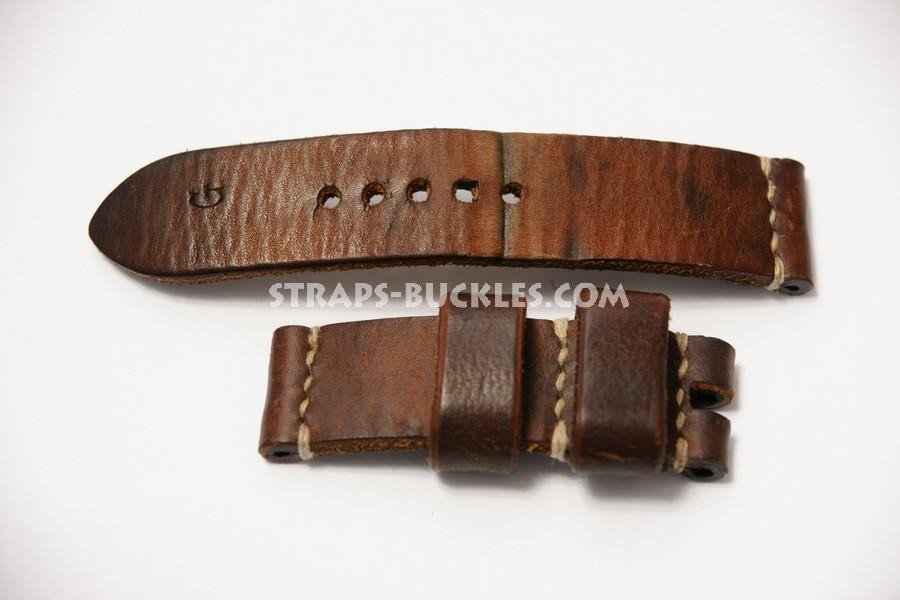
There are also "novodels" - the skin on which all the prints of history are imitations. The cost of this type of strap is lower than the cost of a historical strap.
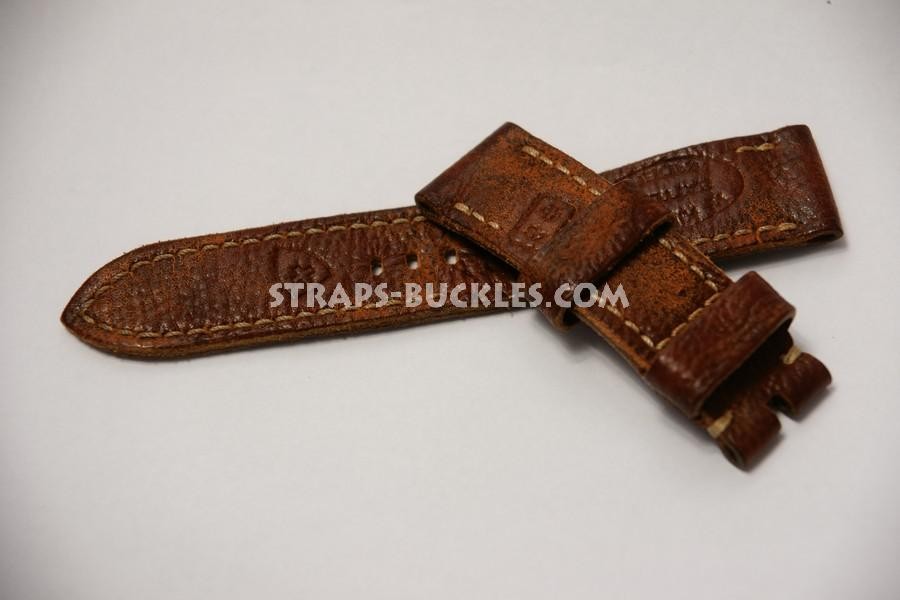
Sport.
Straps made of sports equipment that have served their time (baseball gloves and balls, balls for rugby and basketball).
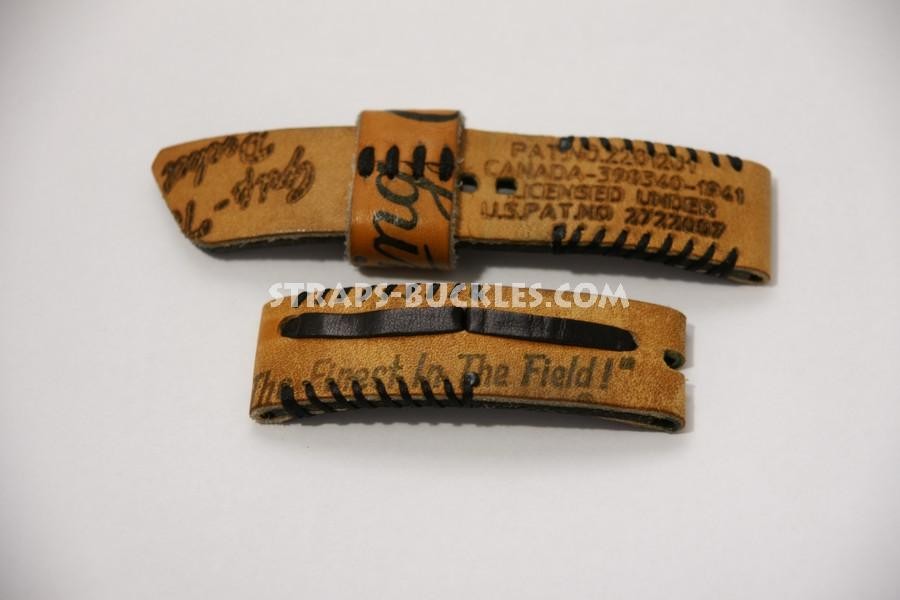
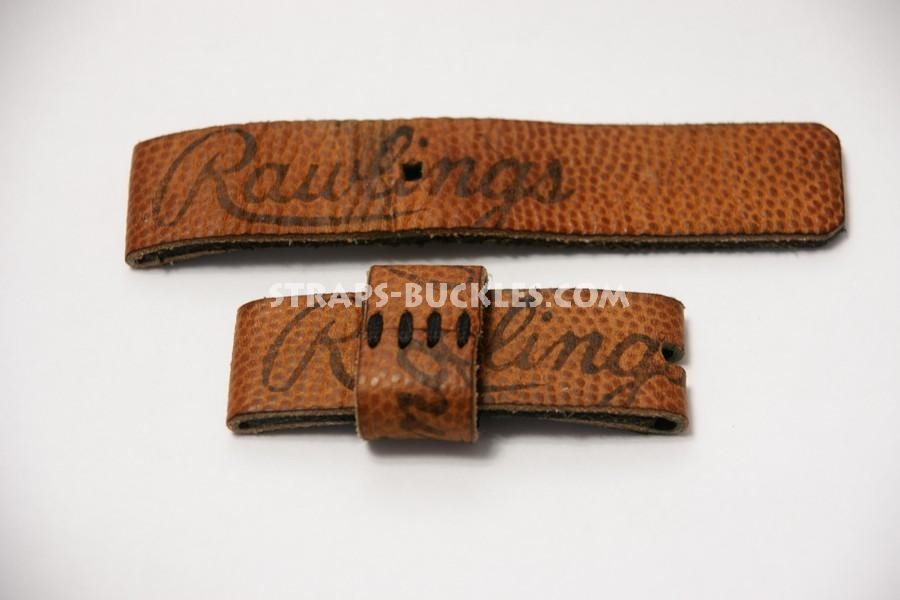
Vintage.
These straps are either made of old leather, or artfully aged.
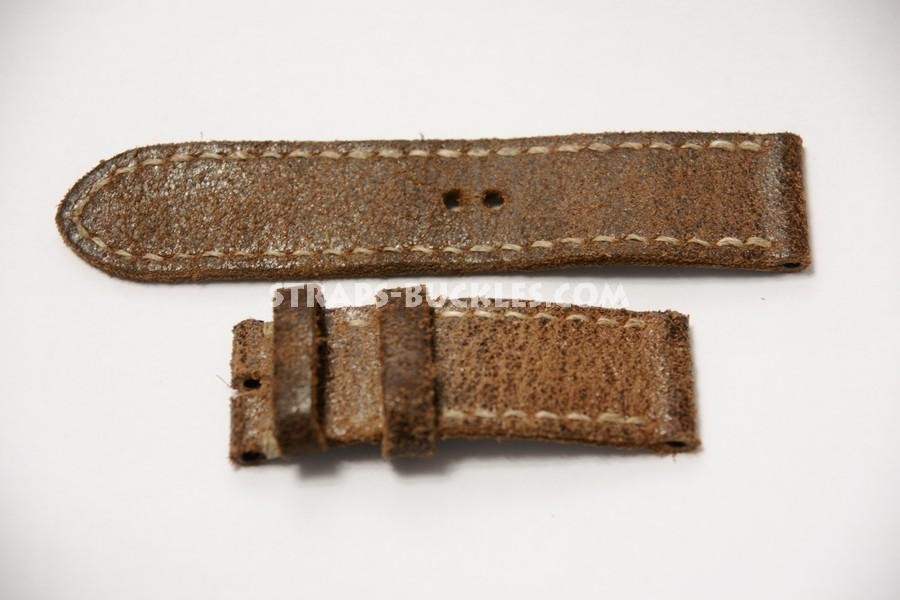
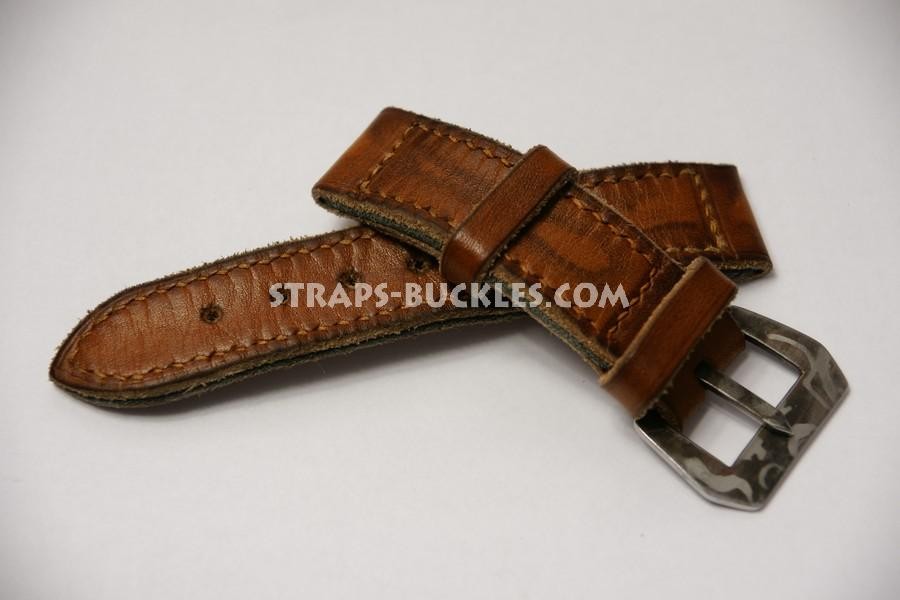
Jeans.
Yes, yes, along with jeans straps, the market already has leather, with a print that imitates jeans fabric reliably.
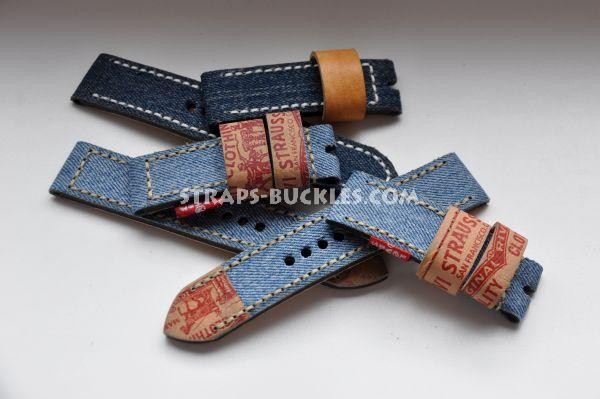
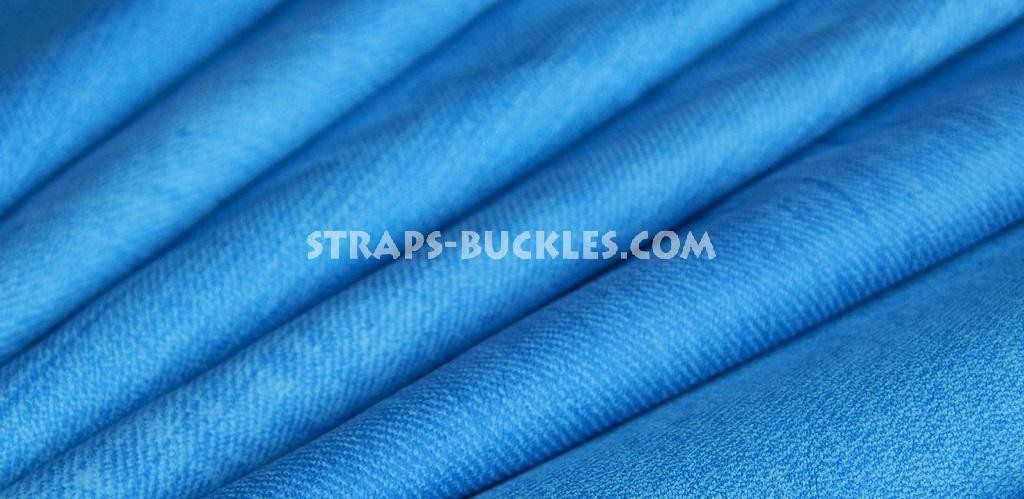
"Screaming".
These straps accentuate the attention of those around them with a pattern, a combination of colors, and a shape.
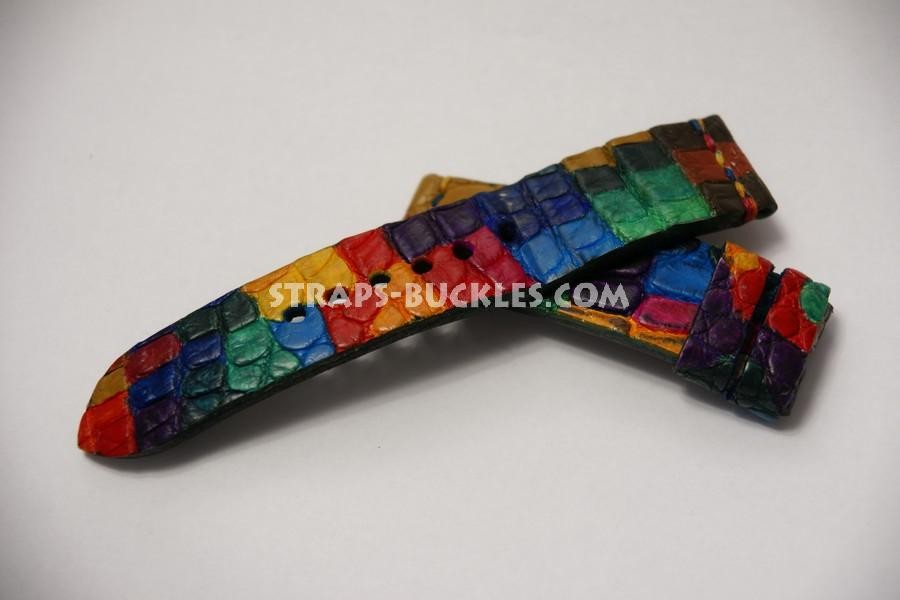
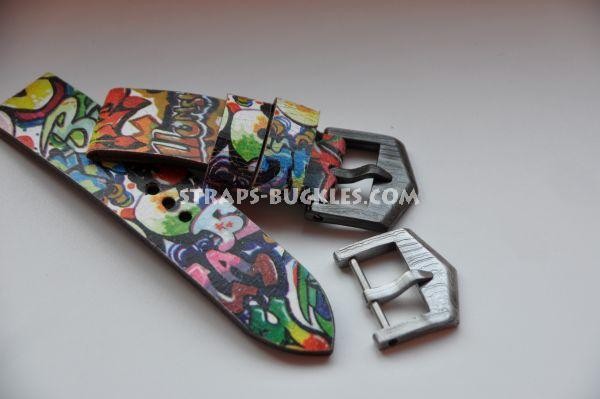
3. Color of the skin.
Here the choice is yours, the colors of your skin are many. But there are natural limitations. As you understand, 70 years ago, soldiers did not carry automatic weapons in bags of acid colors. And their commanders did not wear tablets of crocodile skin).
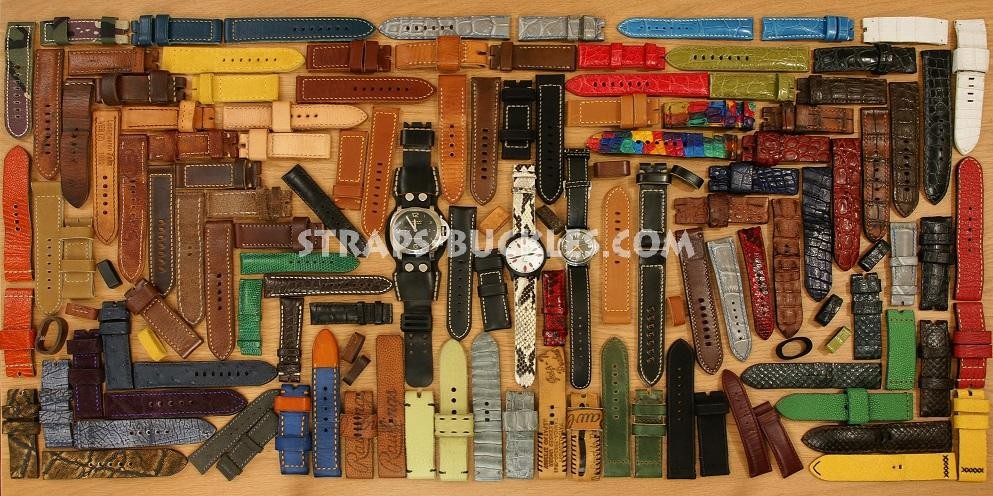
4. Number of layers.
The strap can be double-layered (No. 1 - one strip of skin is folded in half and glued), three-layered for thickening and design (No. 2 - one strip of leather is folded in half, another layer of leather is added between the layers, all is glued), three-layered for strength purposes (№3- the top layer of the facial skin, the lower layer of the lining of the skin, the inner layer of the skin, everything is glued).
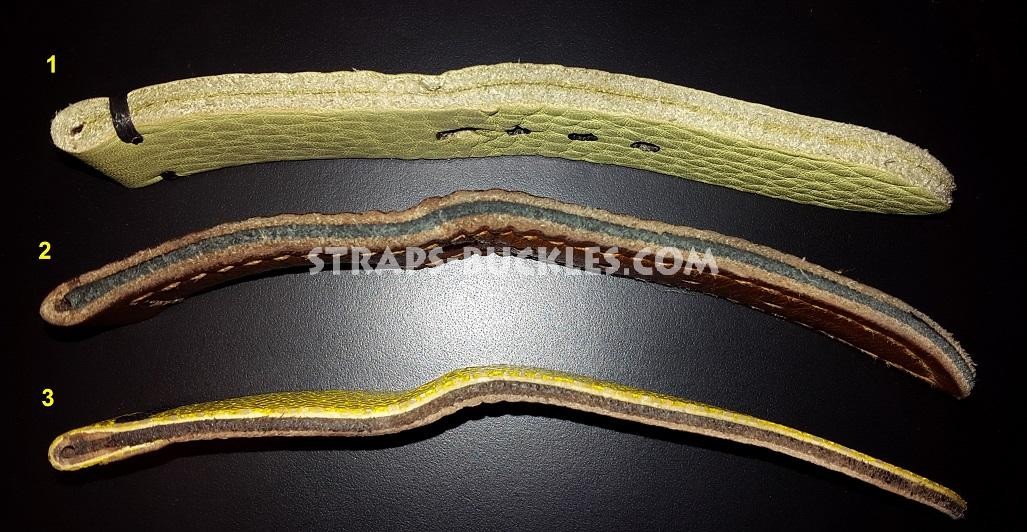
5. Thickness of strap.
At your request, it can be thin (2.5 mm), medium thickness (3.5 mm) and thick (6 mm).
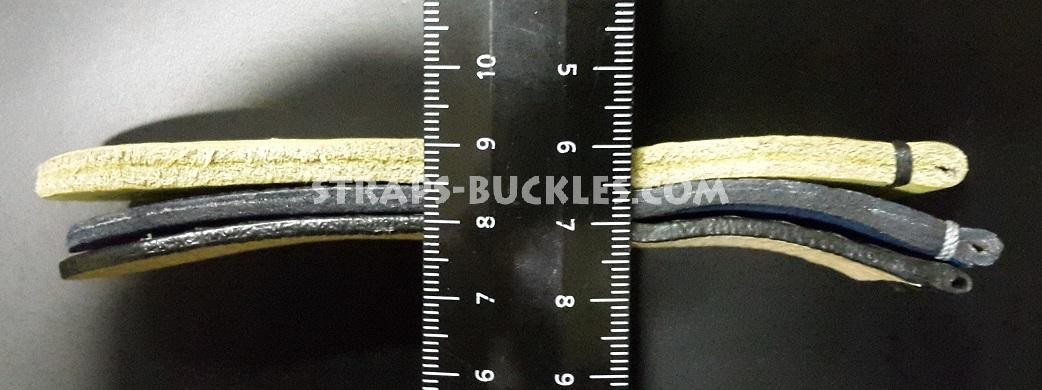
6. Presence / absence of bulky inserts.
Usually, volumetric inserts are made in the area of the girth by the strap of the sides of the wrist. The insert may be a layer of leather or cardboard sewn between the face and the lining. Visually, this insert makes the strap more bulky, which many like.
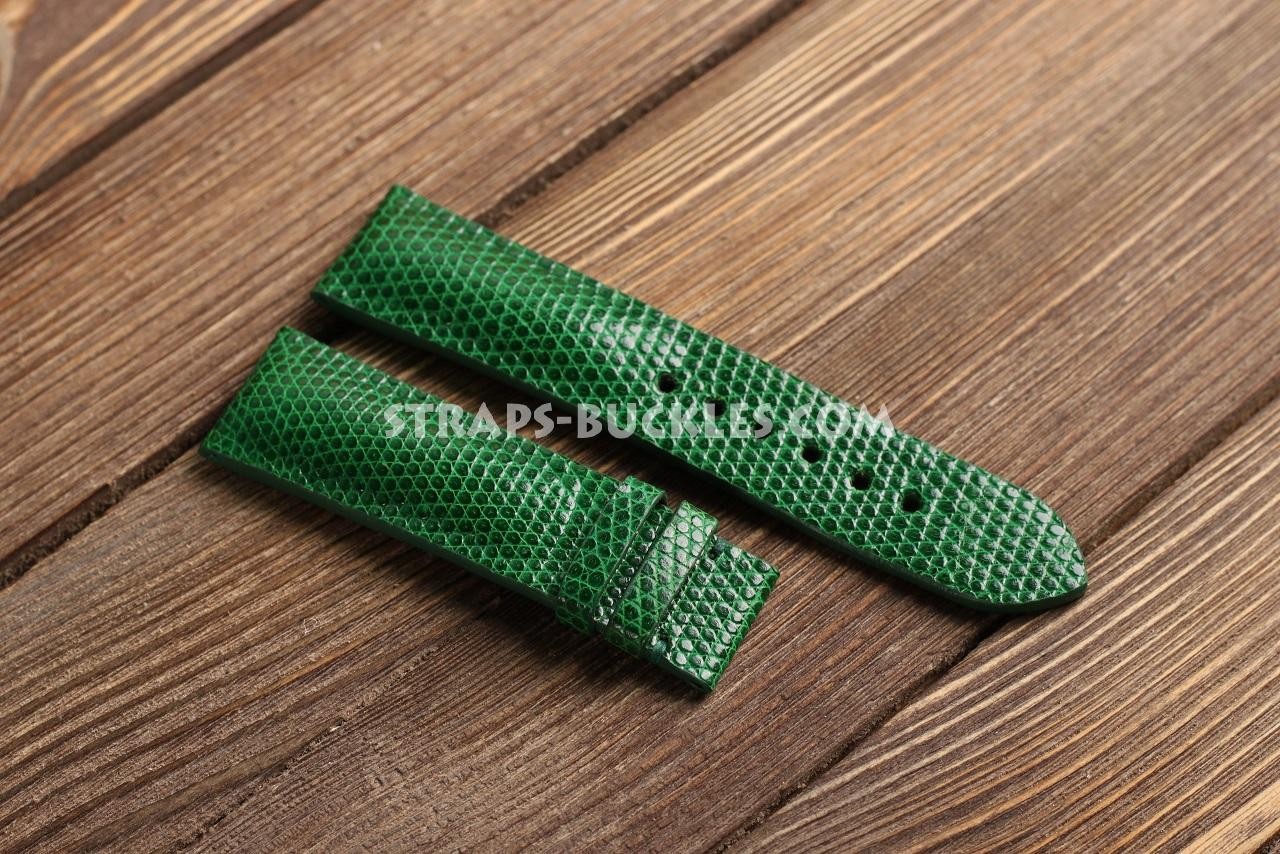
7. Decorative slot in the strap.
They can be of different shapes and sizes. If they are through, then through them the human hand is visible, and if not - then the inner layer of the strap.
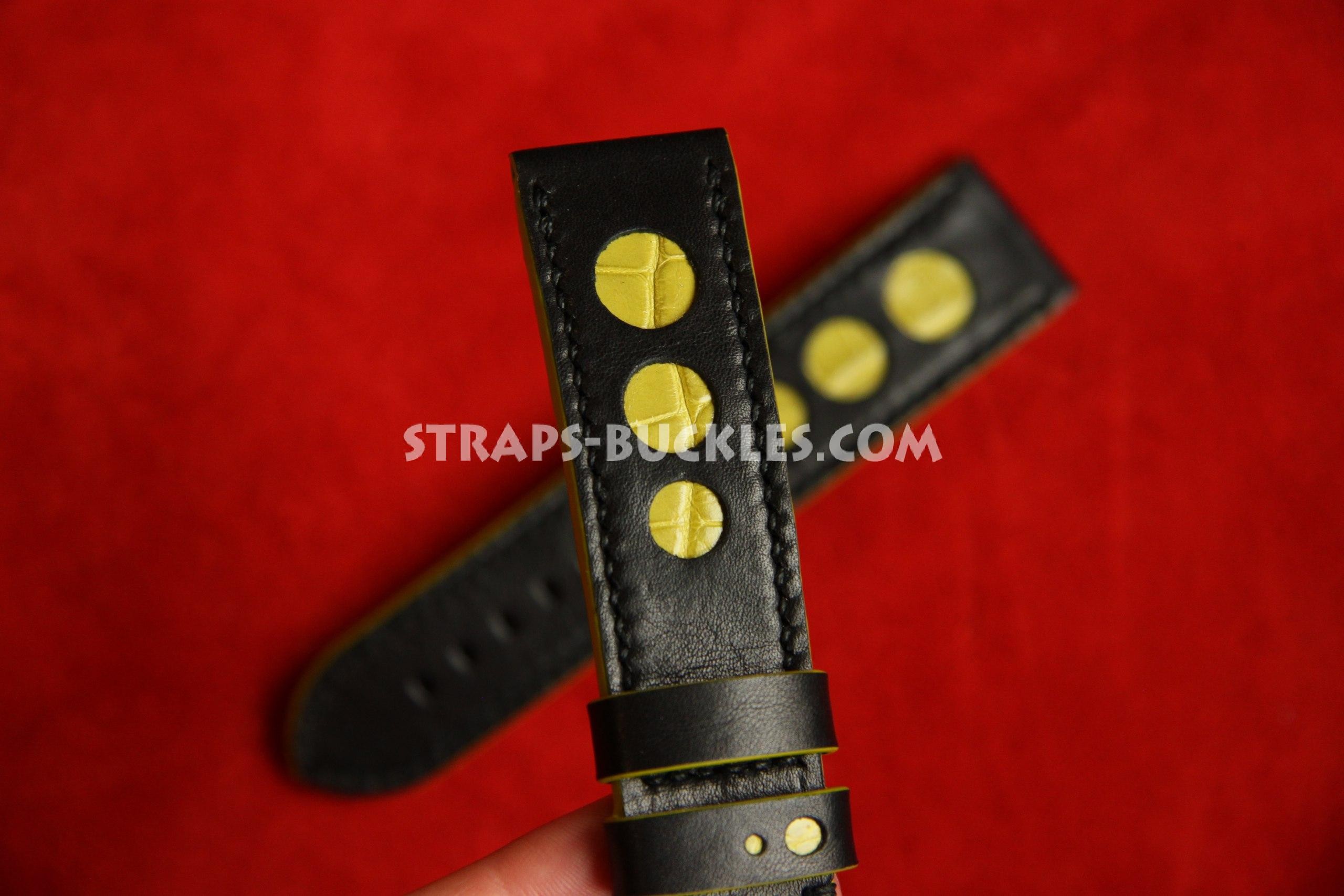
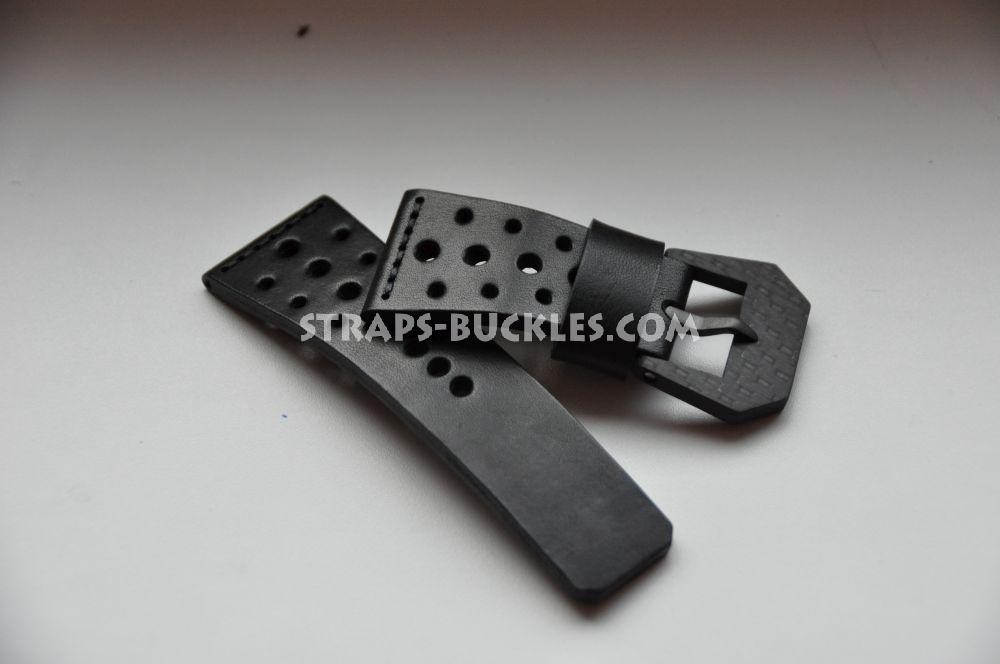
8. Lining color.
If you have an exotic leather strap, the inner part that contacts the wrist skin will be the thin skin of a calf or sheep, not the one used on the outer layer. The color of the lining can be any. Remember that light tones become more noticeable from contact with the skin of the hand. But at the same time it is also a signal that the straps can be cleaned)
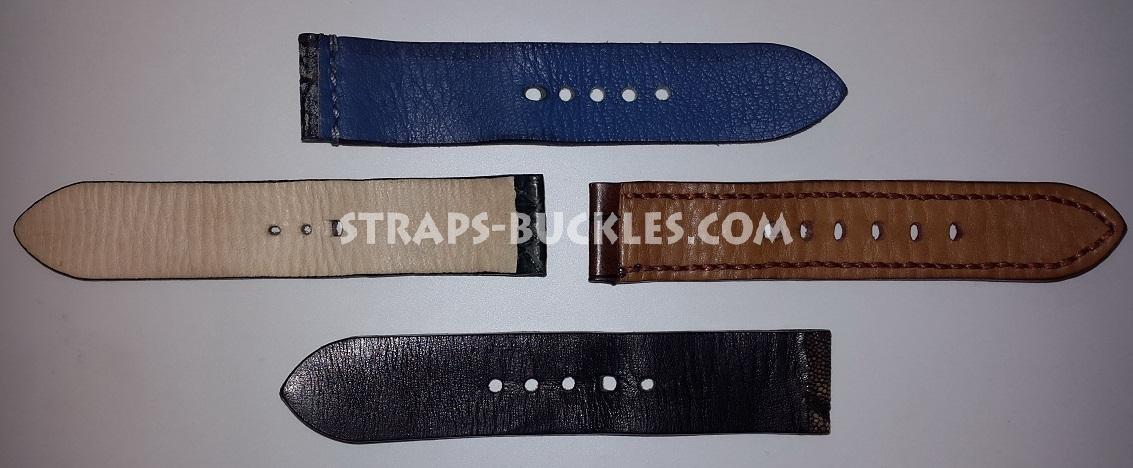
9. The shape of the tip of the strap (tail).
The skin can be cut in different ways. However, there are 5 main types of the end of the strap, the first of which is the most common, although having 2-3 variations of sharpness.
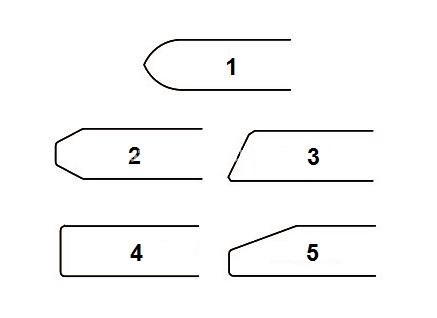
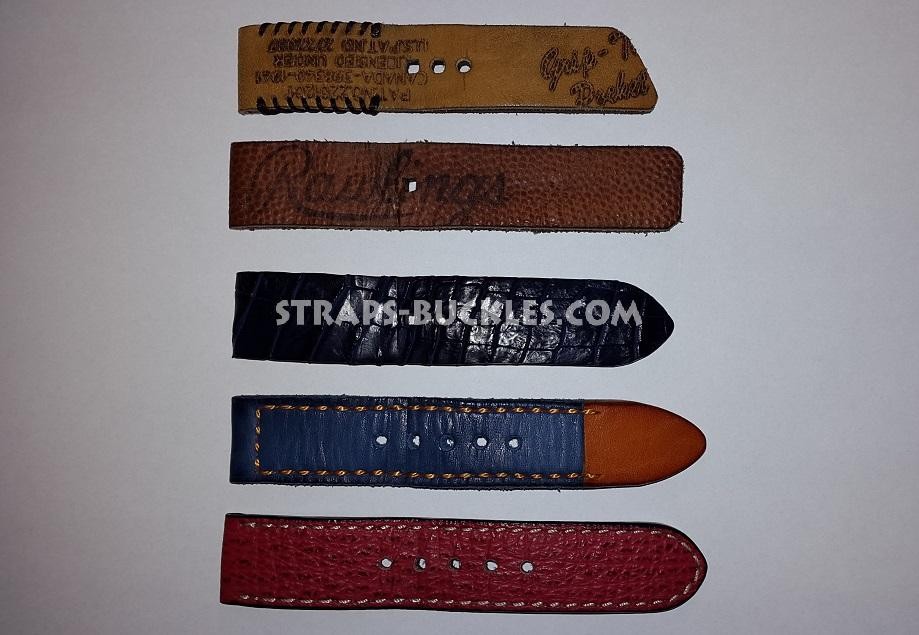
10. Stitching.
The stitch pattern can be selected from the basic 8 kinds. If you want something different - do it!
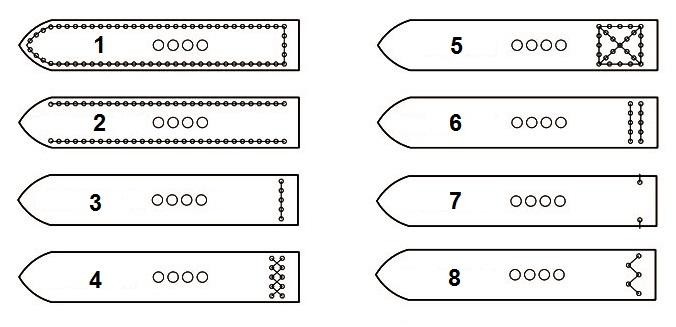
The colors of the threads are great. And you can do straps and without firmware. As you prefer. But often the thread reinforces the look of the strap.
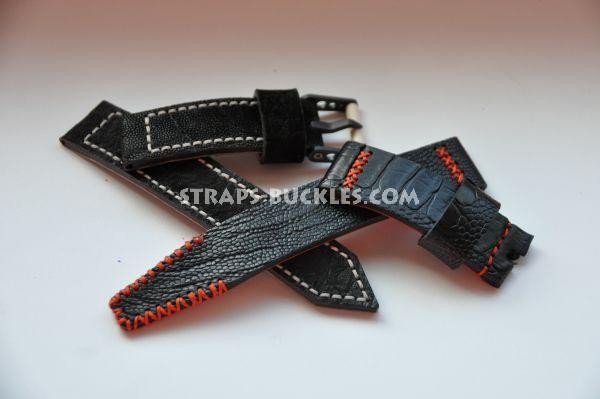
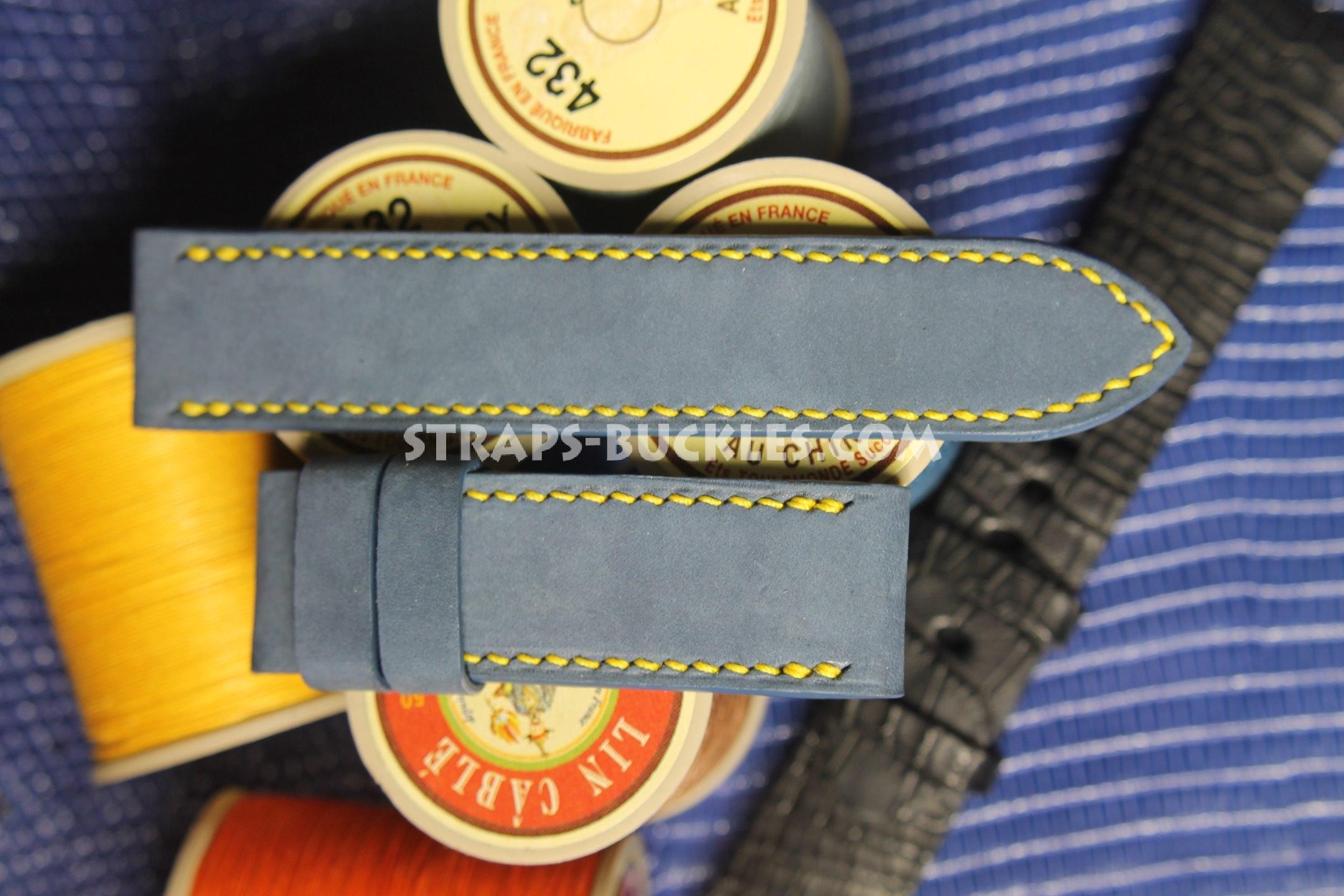
The thickness of the thread is selected under the skin and style of the strap. For example, amm straps use a coarser and thicker thread, and on straps for women's small hours - thin.
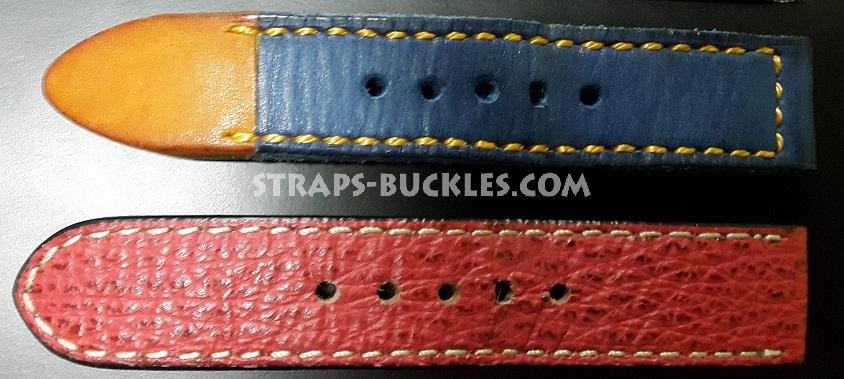
11. Method of processing the edge (rib) of the strap.
Edge may not be processed
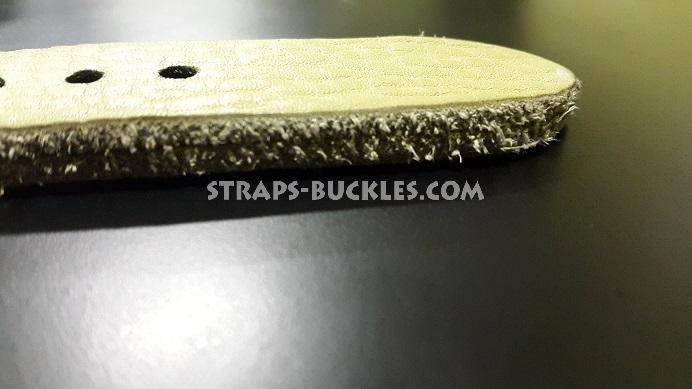
Treated (for example, beeswax)
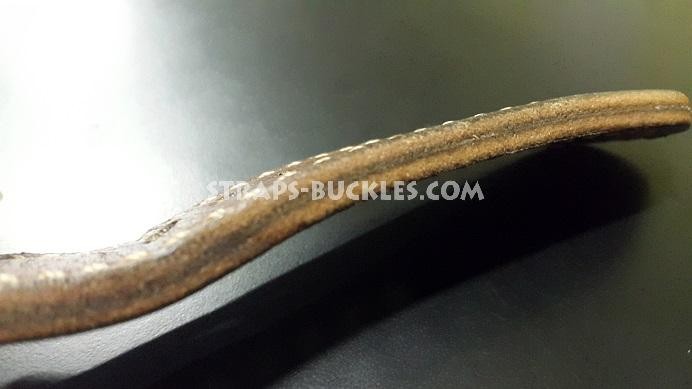
Or painted (in the tone of the leather strap, contrasting paint, black).
12. Strap length.
The simplest and most accurate is to take the ruler and measure both parts of your current watchband, if it suits you in all respects. Then inform these dimensions to the master.
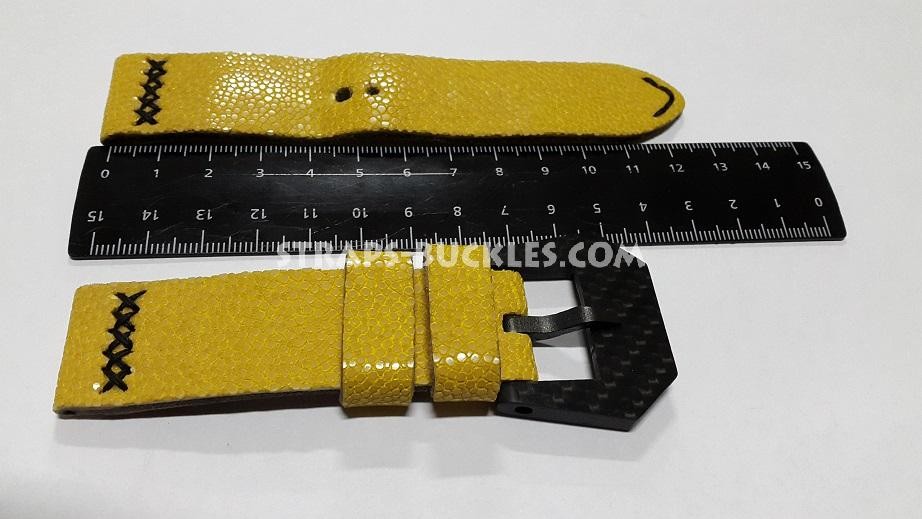
If you do not have watch at hand, then you can use one of the two methods below.
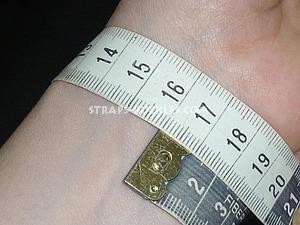
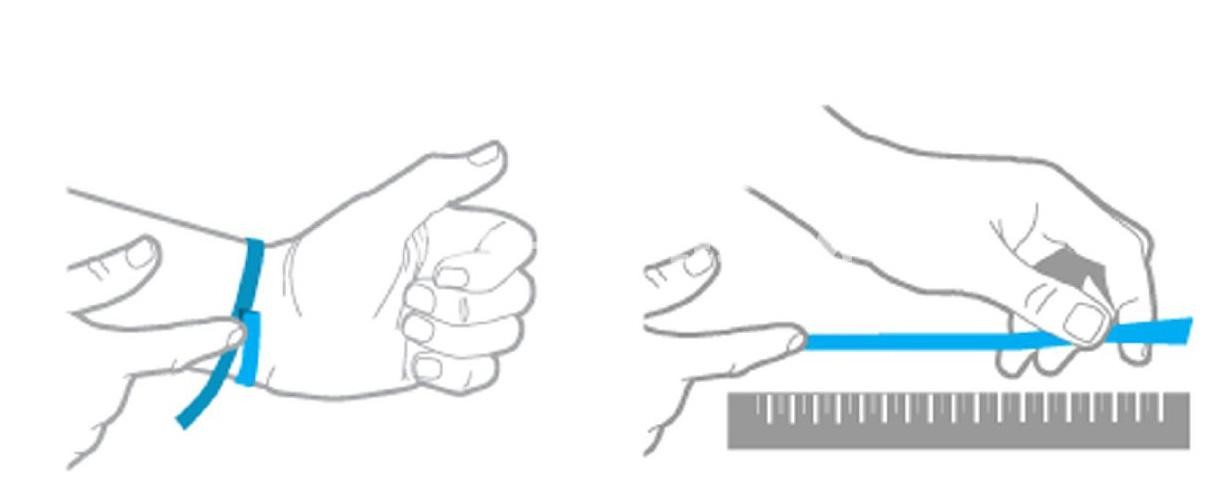
In this case, you report the common circumference of the wrist, and the master does the strap, proceeding from the standards :.
Wrist 165-178 mm - strap length 125 to 75 (large and small parts)
Wrist 178-190 mm - strap length 130 to 80
Wrist 190-203 mm - strap length 135 to 85
Wrist 203-215 mm - strap length 140 to 85
Wrist 217-229 mm - the length of the strap is 145 to 90.
Here is an example of how a small difference in the size of the straps at first glance gives a noticeable difference when wearing. On the hand, this difference is even more noticeable.
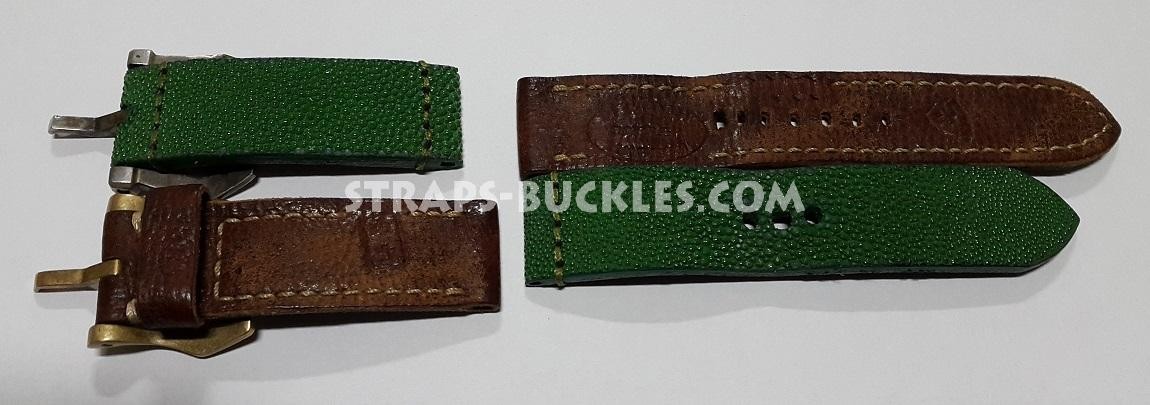
13. Strap width.
You need to decide on two dimensions. The width of the strap at the point of attachment to the watch and the width of the strap at the attachment point to the bass.
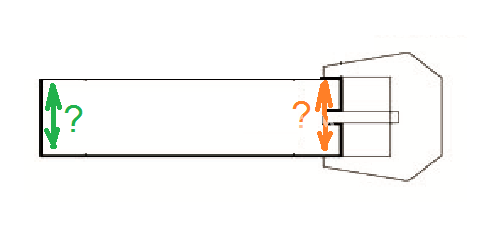
You have the choice to order a strap with similar to your size, or you can change them.
For example, order a strap that will be wider at the point of attachment to the watch.
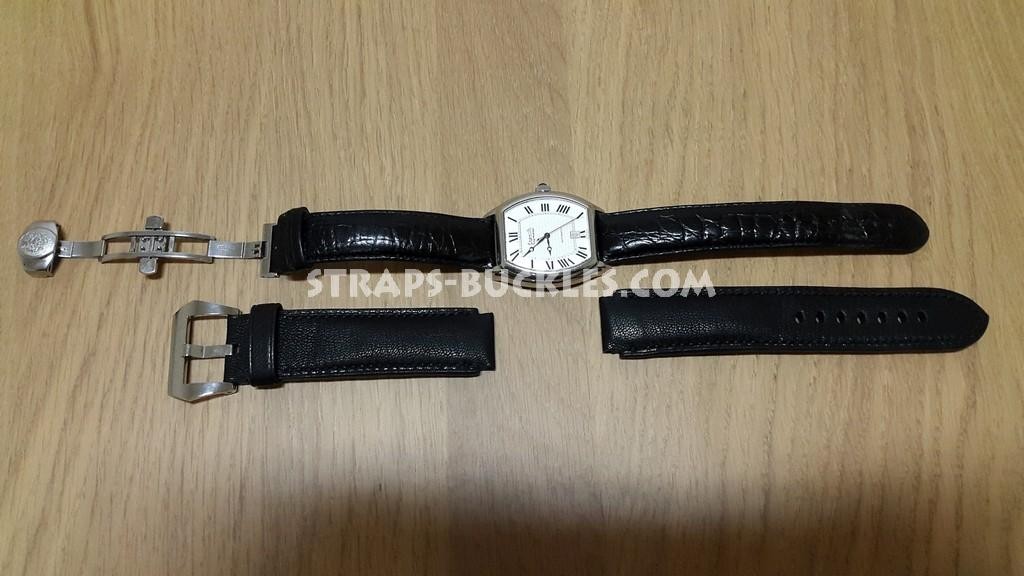
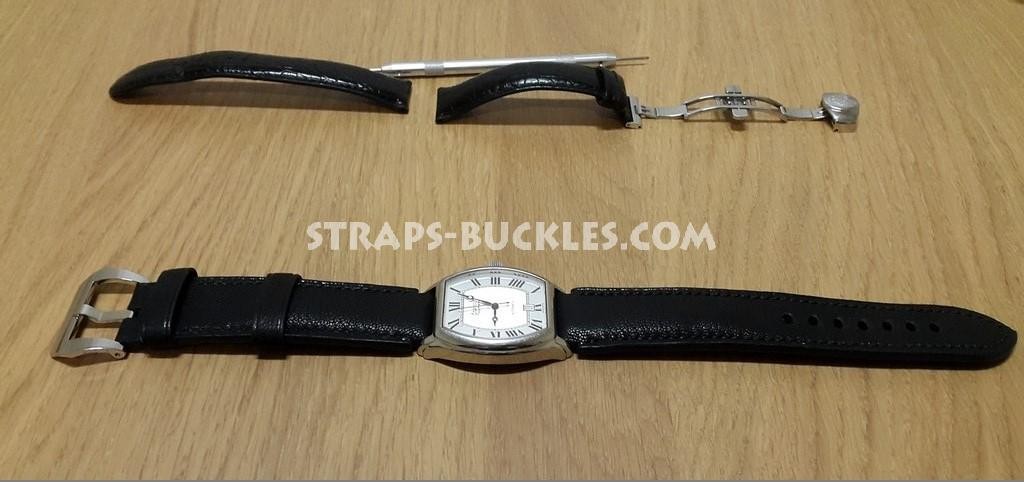
Or near the buckle (and along the entire length) will be wider than the previous one
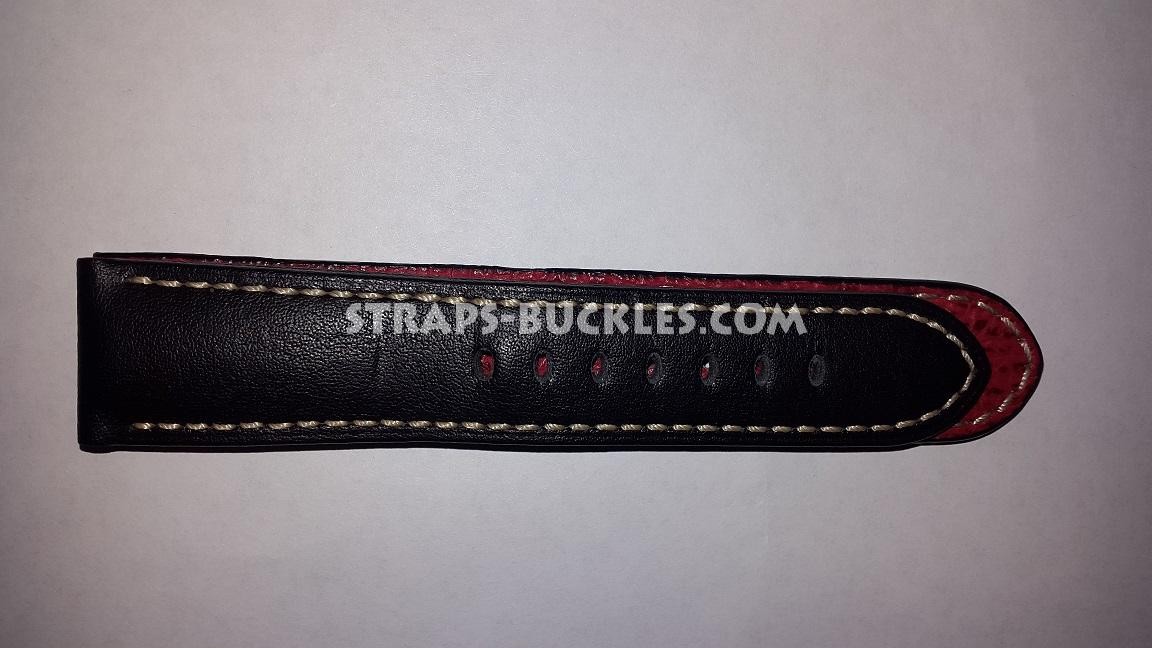
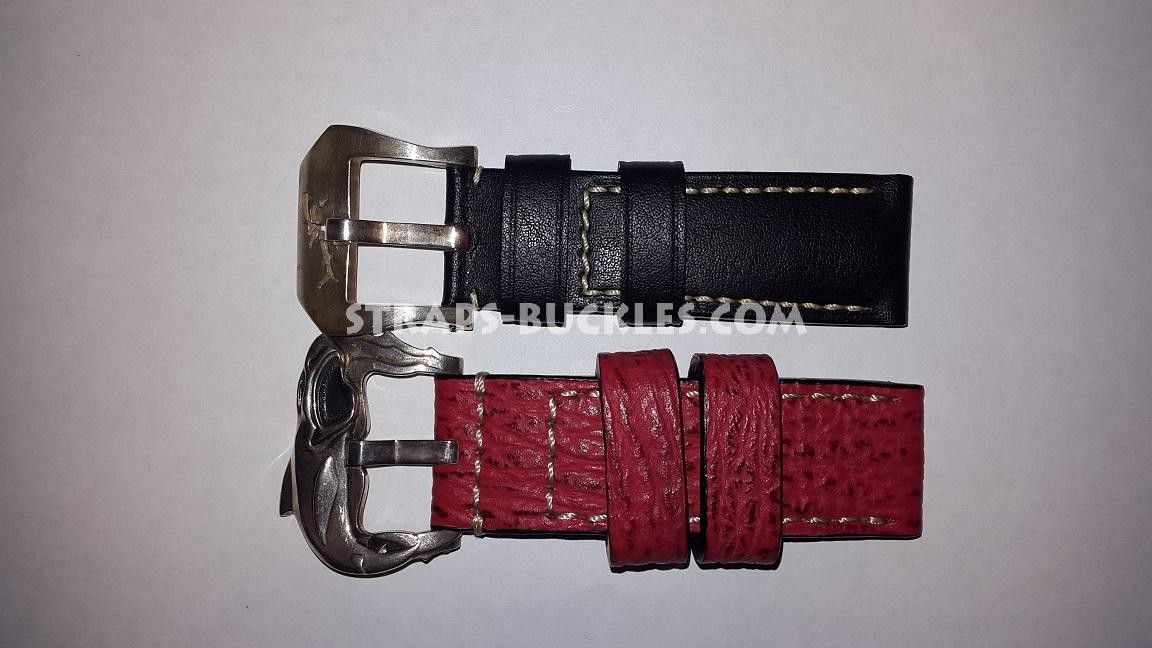
14. Number of holes under the spike of the buckle, the distance between them, their shape.
Holes in the strap allow you to adjust the force of tightening the strap on the arm. The smaller the distance between the holes, the more precise the adjustment. Sometimes holes are used not for utilitarian purposes, but for design purposes.
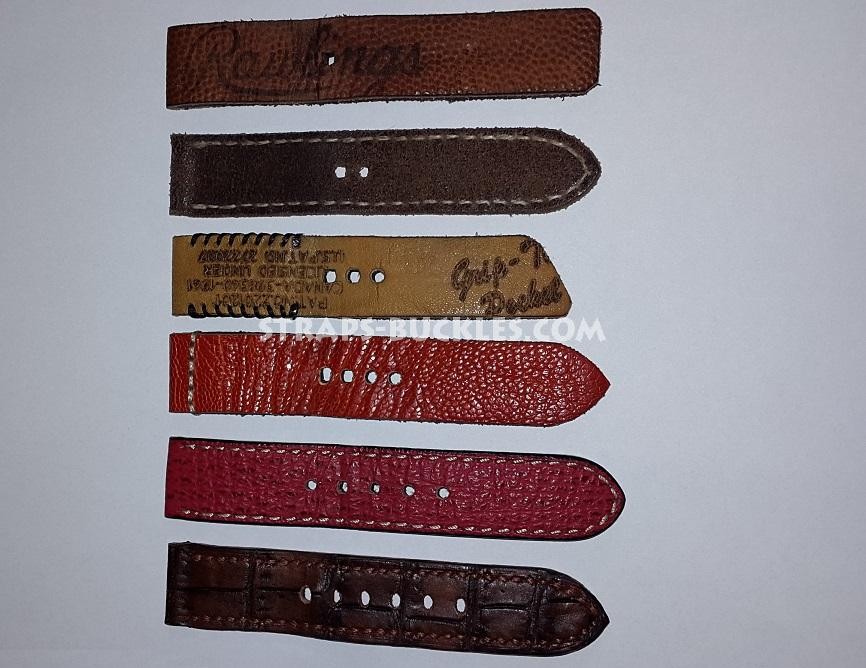
I would recommend making at least 2 holes in the strap, even if you know perfectly the circumference of your wrist and order the strap by analogy with the already existing one. The leather straps stretch in different ways. Yes, and our hand is swelling, it becomes thinner in the girth. I, sometimes, change the position of the spike in the strap during the day. If you are ordering a clock watch for the first time, I recommend a minimum of 3 holes.
The shape of the holes can be either rectangular, round or oval (the most common variant).
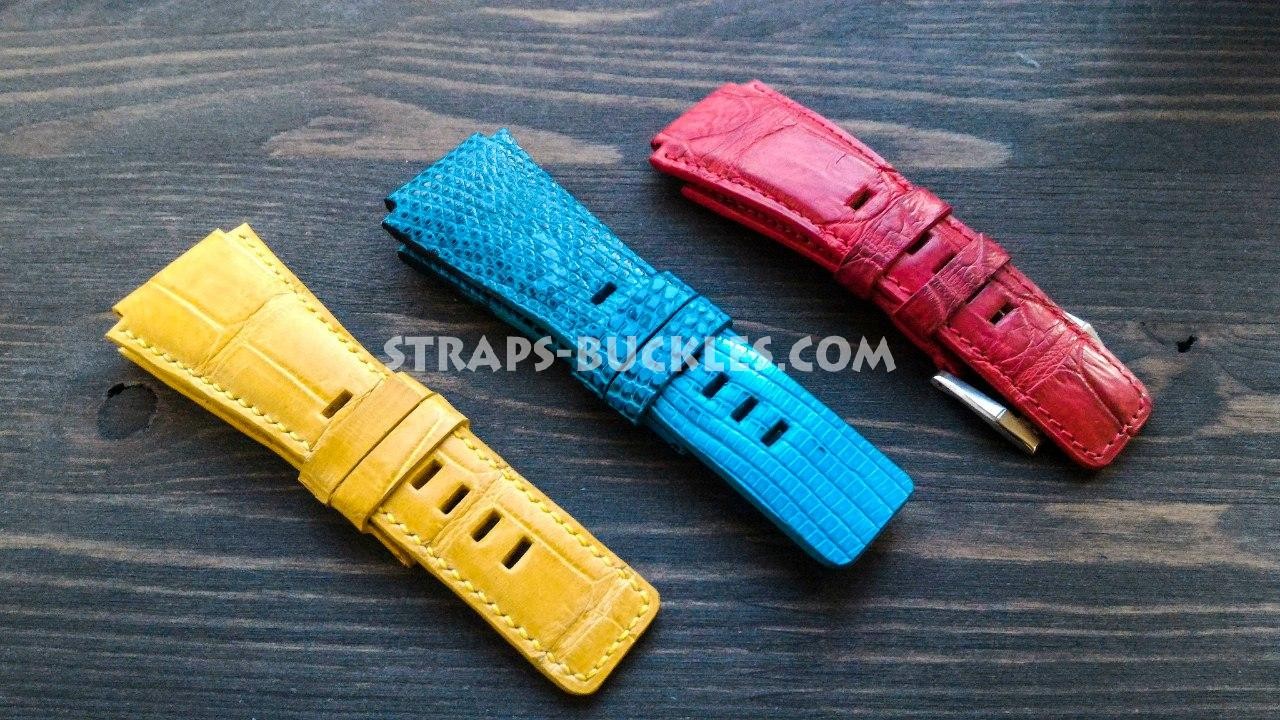
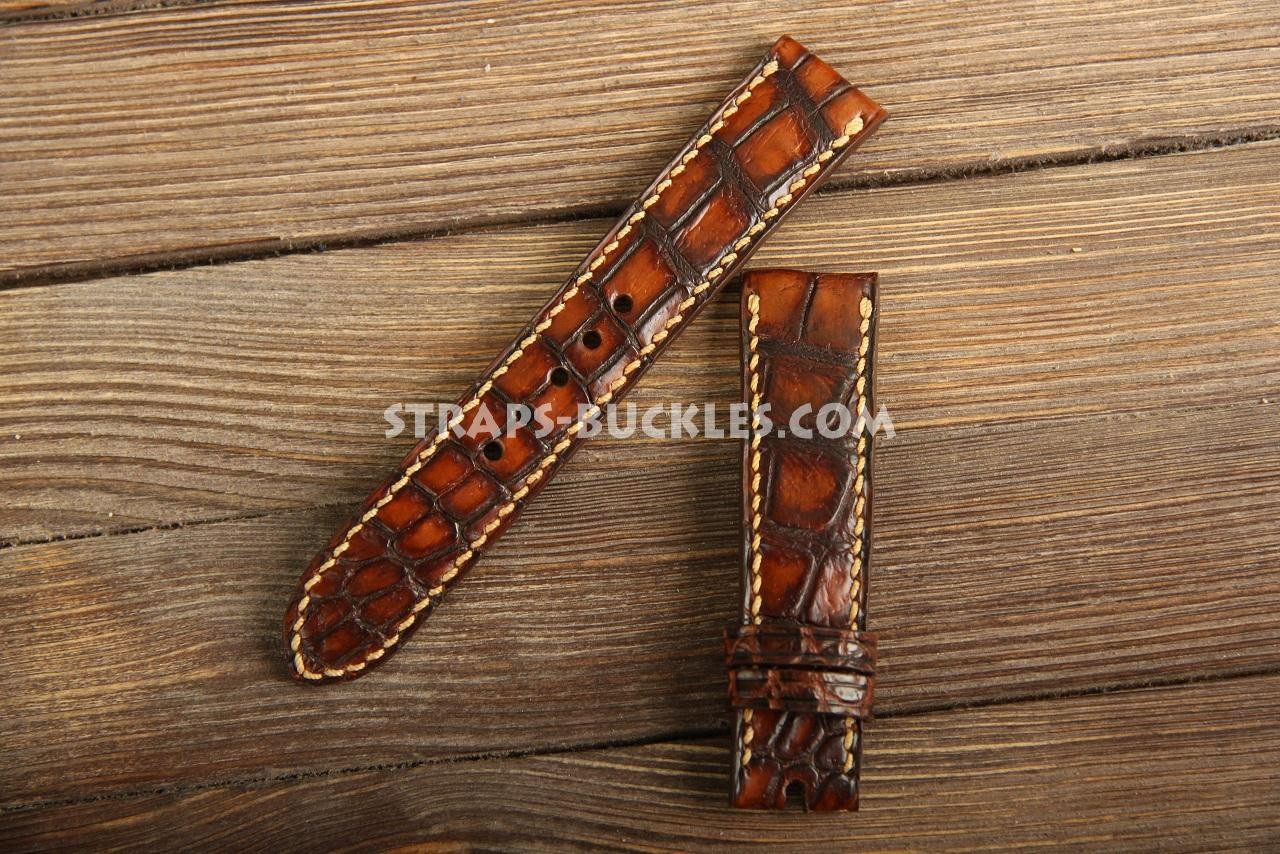
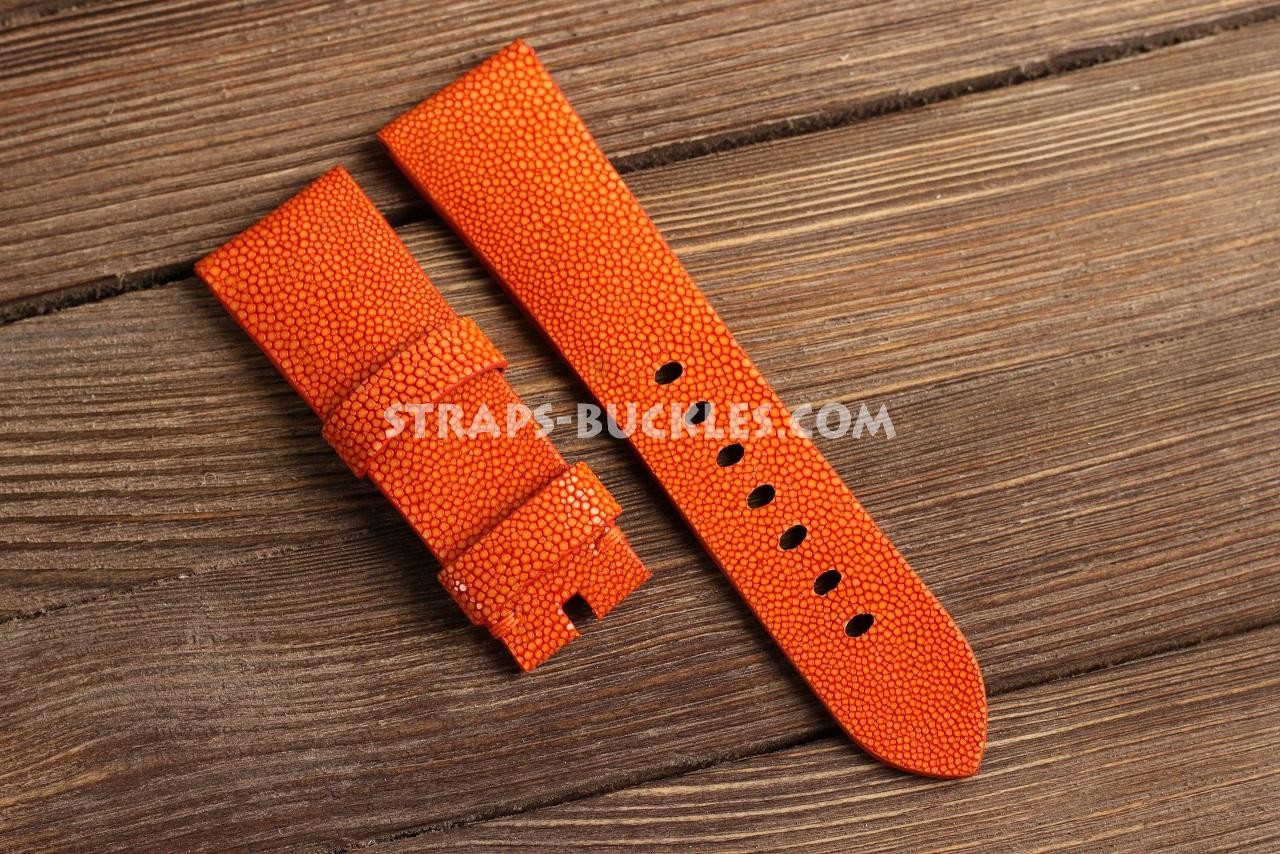
The shape of the holes and their dimensions are dictated by the shape and size of the buckle stud. If the spike of the buckle, say 3 mm, and the hole in the strap is smaller, it will not be very convenient to use the product. A round and rectangular spike can enter into an oval and round hole of the appropriate size, but a round spike will not enter the rectangular hole.
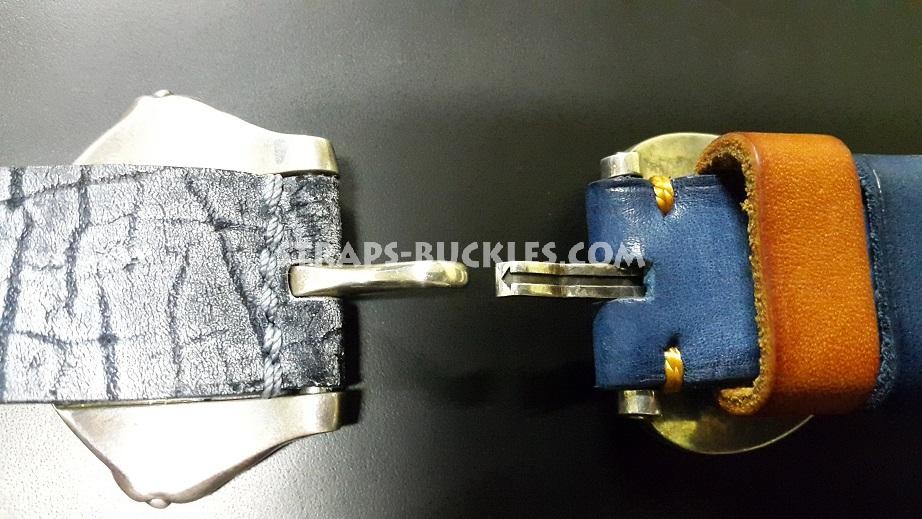
15. Number of shoes and their width.
The loops can be two (narrower) or one wide.
If there are 2 loops on the strap, then one is sewn into the strap near the fixing point of the bakley. And the second is freely movable on the strap.
Naturally, 1 wide shljavka - always becomes free
When, after the fastening of the strap, a small tail sticks out, sometimes even one narrow bandage (even sewn) is enough to clamp it.
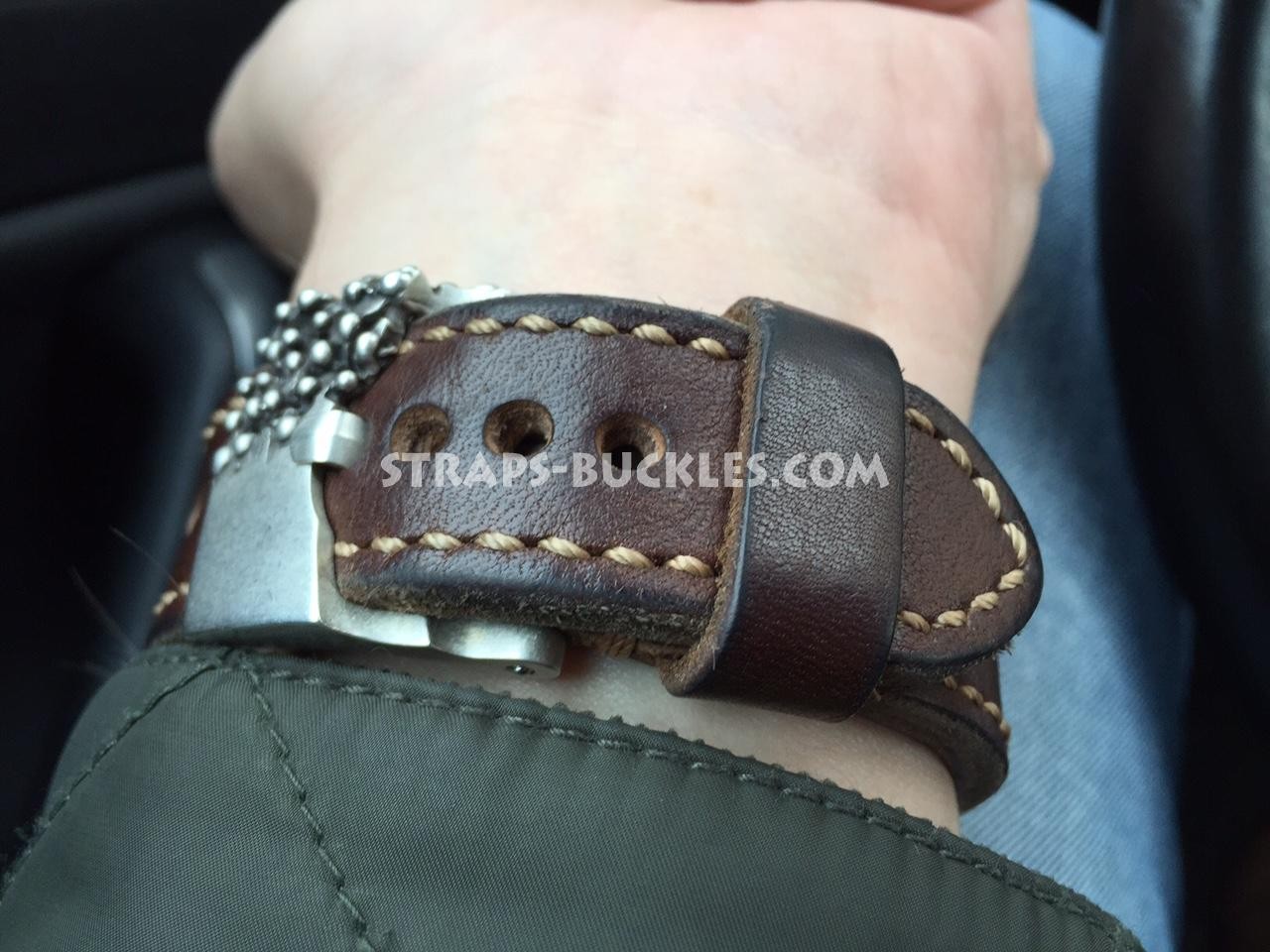
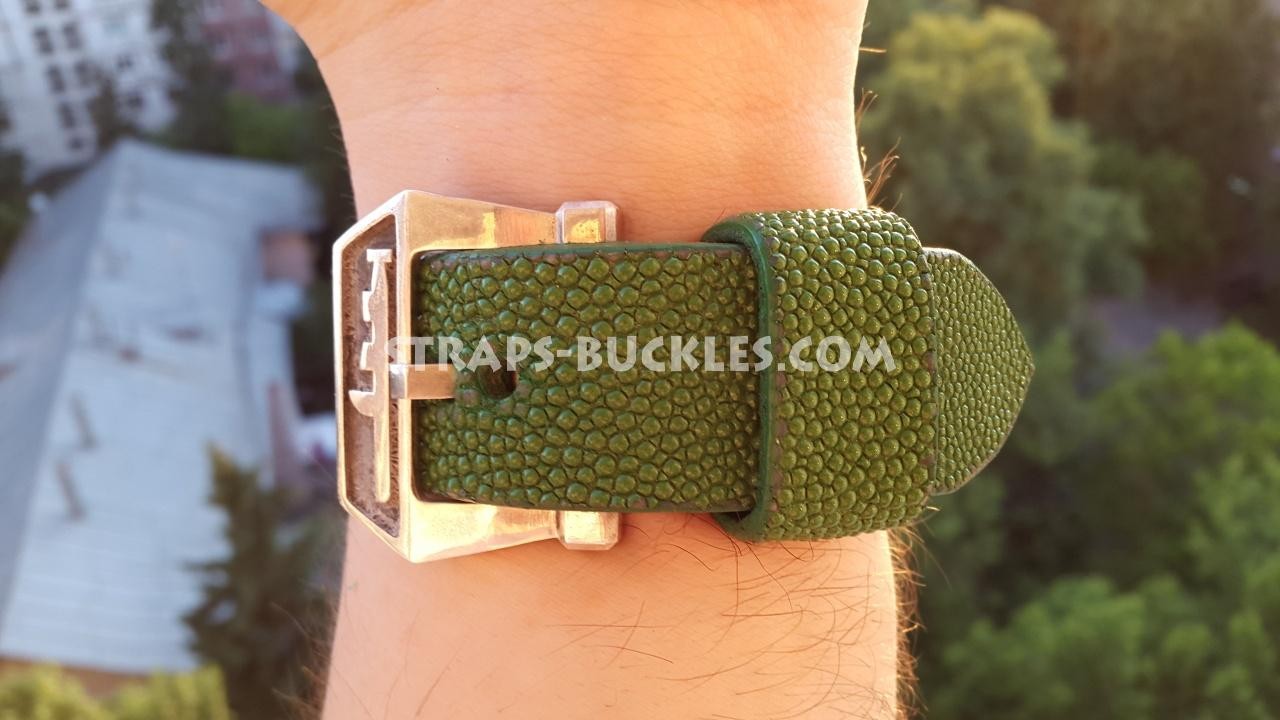
If the strap is long and its tip tends to close to the watch body as close as possible, then a wide movable belt loops may not suffice (possibly a sagging strap).
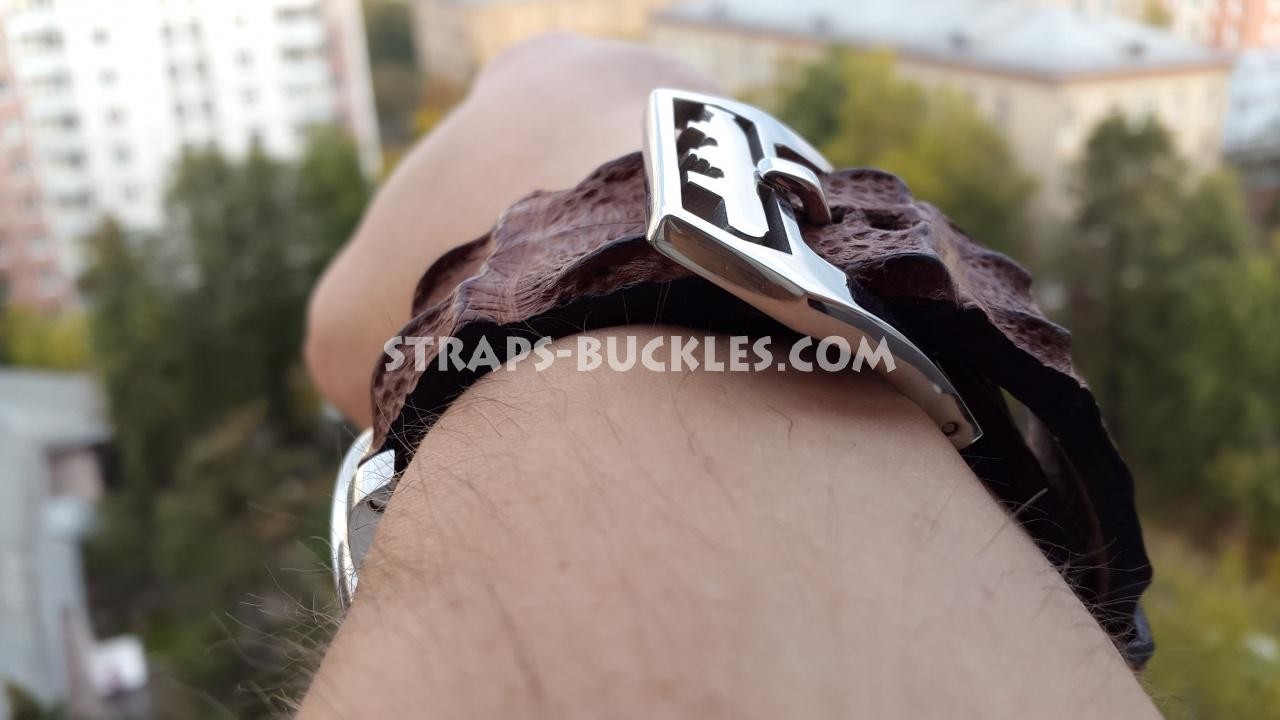
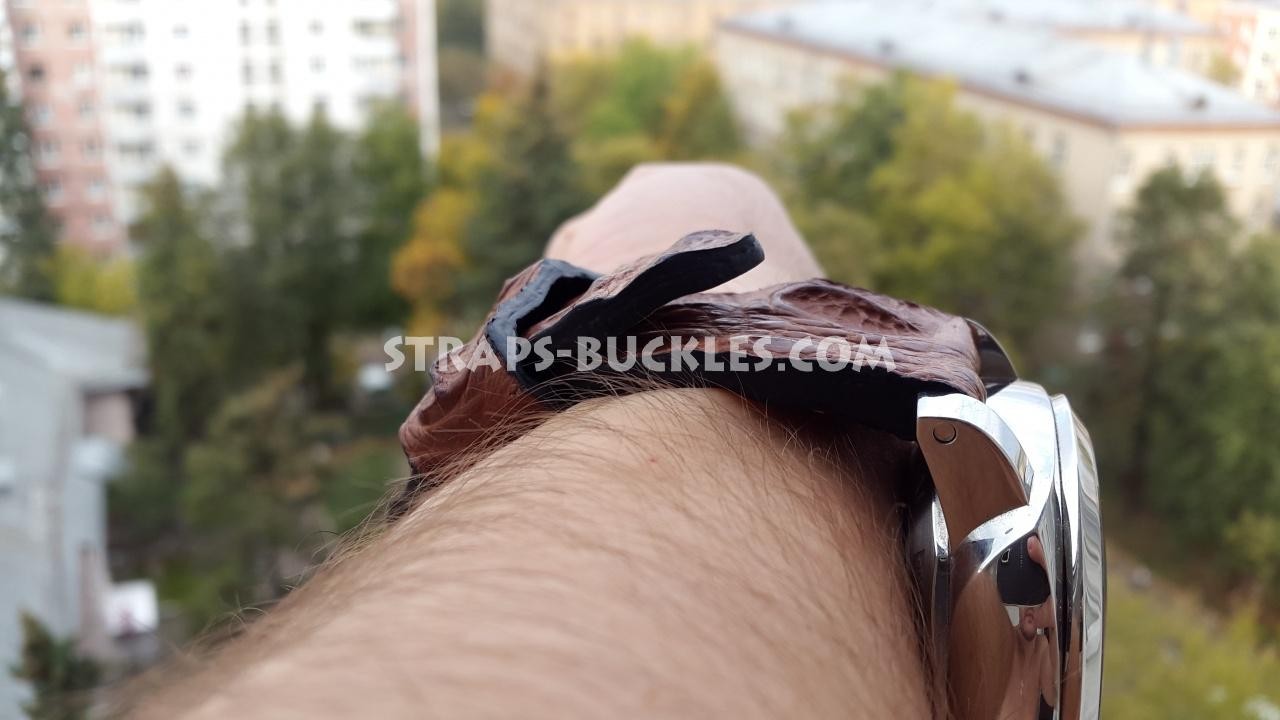
By the way, slippers can be made in different ways: glued or sewn. Some of the shirts are sewn briskly deliberately, so that you can suture them outside.
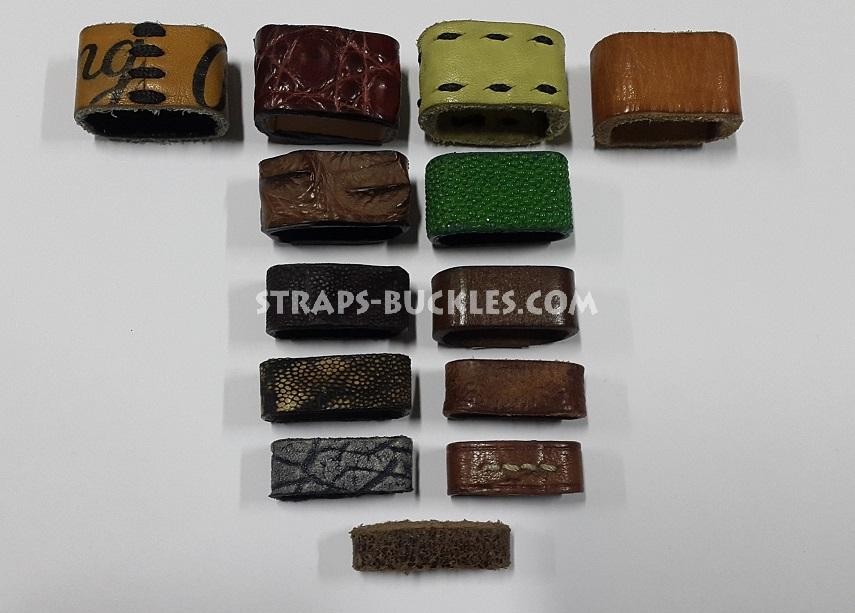
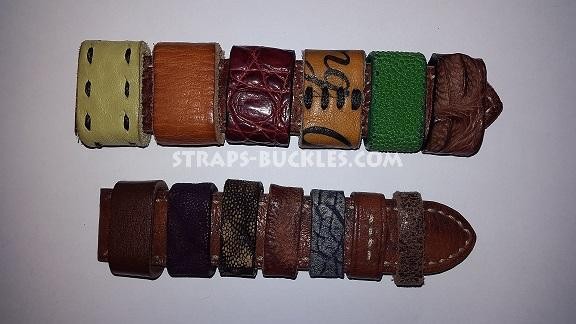
Here, on such a small detail as a sling and the manual on the selection of the strap ends. Now you know most of the nuances)
 Ask a Question 79255427949
Ask a Question 79255427949 

